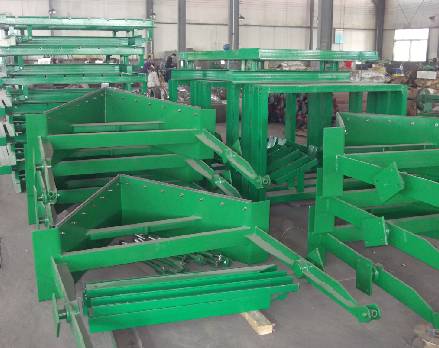 Afrikaans
Afrikaans  Albanian
Albanian  Amharic
Amharic  Arabic
Arabic  Armenian
Armenian  Azerbaijani
Azerbaijani  Basque
Basque  Belarusian
Belarusian  Bengali
Bengali  Bosnian
Bosnian  Bulgarian
Bulgarian  Catalan
Catalan  Cebuano
Cebuano  Corsican
Corsican  Croatian
Croatian  Czech
Czech  Danish
Danish  Dutch
Dutch  English
English  Esperanto
Esperanto  Estonian
Estonian  Finnish
Finnish  French
French  Frisian
Frisian  Galician
Galician  Georgian
Georgian  German
German  Greek
Greek  Gujarati
Gujarati  Haitian Creole
Haitian Creole  hausa
hausa  hawaiian
hawaiian  Hebrew
Hebrew  Hindi
Hindi  Miao
Miao  Hungarian
Hungarian  Icelandic
Icelandic  igbo
igbo  Indonesian
Indonesian  irish
irish  Italian
Italian  Japanese
Japanese  Javanese
Javanese  Kannada
Kannada  kazakh
kazakh  Khmer
Khmer  Rwandese
Rwandese  Korean
Korean  Kurdish
Kurdish  Kyrgyz
Kyrgyz  Lao
Lao  Latin
Latin  Latvian
Latvian  Lithuanian
Lithuanian  Luxembourgish
Luxembourgish  Macedonian
Macedonian  Malgashi
Malgashi  Malay
Malay  Malayalam
Malayalam  Maltese
Maltese  Maori
Maori  Marathi
Marathi  Mongolian
Mongolian  Myanmar
Myanmar  Nepali
Nepali  Norwegian
Norwegian  Norwegian
Norwegian  Occitan
Occitan  Pashto
Pashto  Persian
Persian  Polish
Polish  Portuguese
Portuguese  Punjabi
Punjabi  Romanian
Romanian  Russian
Russian  Samoan
Samoan  Scottish Gaelic
Scottish Gaelic  Serbian
Serbian  Sesotho
Sesotho  Shona
Shona  Sindhi
Sindhi  Sinhala
Sinhala  Slovak
Slovak  Slovenian
Slovenian  Somali
Somali  Spanish
Spanish  Sundanese
Sundanese  Swahili
Swahili  Swedish
Swedish  Tagalog
Tagalog  Tajik
Tajik  Tamil
Tamil  Tatar
Tatar  Telugu
Telugu  Thai
Thai  Turkish
Turkish  Turkmen
Turkmen  Ukrainian
Ukrainian  Urdu
Urdu  Uighur
Uighur  Uzbek
Uzbek  Vietnamese
Vietnamese  Welsh
Welsh  Bantu
Bantu  Yiddish
Yiddish  Yoruba
Yoruba  Zulu
Zulu conveyor idlers
Understanding Conveyor Idlers Essential Components for Efficient Material Handling
Conveyor idlers play a crucial role in the field of material handling and are essential components of conveyor systems. These mechanical devices, which support the conveyor belt, allow for the continuous movement of materials in various industries such as mining, manufacturing, and logistics. To fully appreciate the importance of conveyor idlers, it's essential to delve into their design, functionality, types, and maintenance.
What are Conveyor Idlers?
Idlers are rollers that are mounted on the frame of a conveyor system. They provide support to the belt and help guide its movement over the conveyor. The primary role of idlers is to keep the belt in alignment, minimizing wear and tear, and reducing the risk of damage to both the belt and the material being transported. Properly functioning idlers ensure that the conveyor operates smoothly and efficiently, which is crucial for maintaining high productivity levels in material handling processes.
Types of Conveyor Idlers
There are several types of conveyor idlers, each designed for specific applications
1. Standard Idlers The most common type, used in a variety of generalized applications. They typically come in two forms groove and flat, tailored to suit different belt types.
2. Impact Idlers Positioned at the loading zone of the conveyor, these idlers are designed to absorb the energy from heavy loads and protect the belt from damage during material transfer.
3. Return Idlers These are located underneath the conveyor, supporting the belt as it returns to the loading area. They help in maintaining the stability and tension of the belt.
4. Training Idlers These idlers serve the purpose of keeping the belt aligned to prevent mistracking, which is crucial for the smooth operation of the system.
5. Specialty Idlers Designed for specific applications, such as those involving high temperatures or corrosive materials, they are made from specialized materials to withstand extreme conditions.
conveyor idlers

Importance of Idlers in Conveyor Systems
The efficiency of a conveyor system significantly relies on its idlers. They help minimize friction between the belt and the frame, which in turn reduces the power consumption of the conveyor. By ensuring that the belt maintains proper alignment, idlers help prolong the life of both the belt and the entire conveyor system. Furthermore, properly designed and maintained idlers facilitate a smoother operation, leading to less downtime and more consistent performance, thereby enhancing productivity.
Maintenance of Conveyor Idlers
To ensure the longevity and performance of conveyor idlers, regular maintenance is essential. This includes
- Inspection Regularly check for signs of wear or damage. Look for issues such as misalignment, excessive vibration, or abnormal noise, which may indicate a problem with the idlers.
- Cleaning Keeping idlers clean helps prevent the buildup of materials that could affect their operation. Dirt and debris can cause friction and lead to premature wear.
- Lubrication Many idlers have bearings that require lubrication. Routine checks and lubrication can help minimize friction and extend the life of the idler.
- Replacement Eventually, idlers will wear out. A regular replacement schedule, based on the idler's usage and the specific demands of the operation, can prevent unexpected failures.
Conclusion
In conclusion, conveyor idlers are critical components that significantly impact the efficiency and longevity of conveyor systems. Their proper selection, maintenance, and replacement can lead to enhanced operational efficiency and reduced costs in material handling processes. Recognizing their importance is essential for businesses aiming to optimize their logistics and manufacturing operations. As industries continue to evolve, understanding and investing in the right idlers will remain a priority for maintaining competitive advantages in the marketplace.
-
Revolutionizing Conveyor Reliability with Advanced Rubber Lagging PulleysNewsJul.22,2025
-
Powering Precision and Durability with Expert Manufacturers of Conveyor ComponentsNewsJul.22,2025
-
Optimizing Conveyor Systems with Advanced Conveyor AccessoriesNewsJul.22,2025
-
Maximize Conveyor Efficiency with Quality Conveyor Idler PulleysNewsJul.22,2025
-
Future-Proof Your Conveyor System with High-Performance Polyurethane RollerNewsJul.22,2025
-
Driving Efficiency Forward with Quality Idlers and RollersNewsJul.22,2025





























